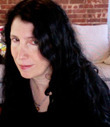Caroline Leavitt's Blog, page 76
November 24, 2013
Arielle Eckstut and Joann Eckstut talk about The Secret Language of Color, why there are now orange cars popping up, mismatched socks, writing a book with her mom, and so much more
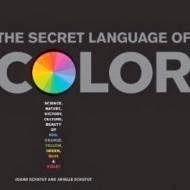
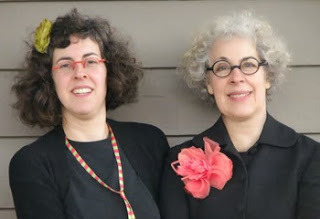
One of the reasons I love going to book festivals is because there's always a good chance I'll run into Arielle Eckstut and get to hang out with her. She's married to the hilarious author David Henry Sterry, and together, as The Book Doctors, they help writers publish and promote their works. Arielle's also an agent-at-large at Levine Greenberg, a fabulous author herself (Pride and Promiscuity: The Lost Sex Scenes of Jane Austen), and one of the warmest, funniest people around. The Secret Language of Color, which she wrote with her mom, is both dazzling and profound. It does what the best books do--it makes you see the world differently by examining and exploring the way we react and relate to color and why and how it's so important.
I'm so completely thrilled to have Arielle--and her mom, Joanne, here on my blog. Thank you both!
What was your inspiration for writing this book?
I grew up in an apartment filled with color. There was a room filled with a rainbow of yarns that my mom used for knitting, crocheting and fiber art. Other rooms had kilim rugs, Marimekko bedding, closets filled with hand-embroidered clothing, colorful Indian cottons, purple suede boots. My mom was a fine artist and her art filled the house with its primary theme—color. Whether that love of color was passed to me via nature or nurture we'll never know (though you could definitely make a case for the former, if you saw my maternal grandmother’s cornflower blue silk wallpaper).
My mom has what is the equivalent of perfect pitch when it comes to color. This is actually something you can be tested for. I have not taken the test myself, but I'm sure I'm right up there. Our perception of color was keen and we were always on the lookout for color in its myriad forms. A trip we took to France ended up being a search for the most interesting shutter and door colors. Trips to the beach consisted of collecting rock rainbows. In the meantime, my mom had transitioned from a fine artist into an interior designer and color and materials expert for architects and developers. Her signature palettes became integral parts of schools, museums, courthouses, apartment buildings, etc. After a number of years doing commercial projects, she started a residential interior design business with an emphasis on color.
I became a literary agent even though I really wanted to be an industrial designer. Instead I combined my interests in the literary and the visual and specialized in illustrated books. In fact, I agented two illustrated books by my mom, Room Redux and The Color Palette Primer. These were our first professional collaborations.
Soon after that, a couple of friends and I came up with the idea for LittleMissMatched, a company that sold socks that don't match in packs of threes. The idea behind that idea was to inspire creativity and self-expression in girls through color and pattern. We did what was considered radical in the business regarding color: we used lots of black, even in bedding. We concentrated on a rainbow of colors, not on pink, and we used sophisticated palettes that you would never see in kids’ clothing. These palettes were developed by my mom and me. They were the first thing we worked on together that was color related and we were hooked!
We wanted to do another project together, but we weren't sure what it should be. As we talked, we realized we both were frustrated by what was out there on color. For example, a lot of the excellent technical books on color are in black and white! And none of the books we really liked were as aesthetically appealing as we thought a book on color should be. Further, there was also no true overview of color. So, we set to work.
I love this quote: “Anyone who claims to be an expert on color is a liar. A true expert would have to be fluent in physics, chemistry, astronomy, optics, neuroscience, geology, botany, zoology, human biology--and the list goes on and on.” Can you talk about this a bit, please?
When we started the book, we thought of ourselves as color experts. But as soon as we started researching, we realized how naïve we were. Color is omnipresent in our world. The reason for this is because 80% of what the neocortex (the part of our brain that deals with a lot of higher order processing, like language) processes is visual. And everything that’s visual is colored. So to be an expert on color, you’d have to be an expert on all those things listed in your question as well as many, many others. On a related note, there is so much color misinformation being bandied about the Internet as fact. This is particularly true when it comes to color psychology. You’ll see lots of stuff like “blue makes you feel calm” or “orange makes you happy”. There is no science to back up these claims, but they’re stated as scientific fact even on reputed websites and by reputed experts. It was satisfying to get to the bottom of these “facts”.
What I think is so profound and wonderful about this book is how it really makes you see the world and all its colors differently. Color, you say, is the place where science and art meet. Can you talk about this, please?
Artists of yore werescientists. They were the ones who figured out how to create the pigments they used in their art. In other words, they were some of our first chemists. Then in 1856, a clever young chemist named William Perkin, due to an experiment gone awry, created the first mass-produced chemical dye, i.e. mauve. This was the beginning of modern chemistry as we know it. Within a few years, over 2000 new dyes were created and suddenly artists didn’t have to be chemists anymore. They could rely on commercial pigments that were cheap and easy to come by. Of course, there were still artists with a great interest in science and the creation of pigment. Yves Klein, for example, was famous for creating a brilliant shade of blue in the mid 20th century. And today, there is a real resurgence of mixing art and science. One of our favorite artists working today is James Turrell who works with the science of light as it relates to color.
Every page is filled with a fascinating fact. A bull doesn’t charge a red cape because it’s red. It charges because of the movement. Many cultures don’t give orange a name. What are your favorite color facts and why?
ROYGBIV, the pneumonic that Sir Isaac Newton came up with, to define the rainbow was completely arbitrary. He chose seven colors not because there are seven fundamental colors, but because he wanted to imitate the musical scale. He originally chose eleven colors. But just as easily could have chosen 20 or 4. In fact, the “I” in ROYGBIV stands for indigo, which we no longer consider a fundamental hue.2 The grass really is greener on the other side of the fence. This is due to optical laws. When you look down on grass, you see the dirt below, pebbles, maybe even a gum wrapper. Whereas, when you look across to your neighbor’s yard, the angle at which you’re looking eliminates all that other junk. 3 After black and white, red is the first color to be named in every language, no matter what your longitude or latitude. Scientists postulate this has to do with the fact that our blood is red.
The book is totally gorgeous. Did you have a hand in the design?
The book was designed by Bonnie Siegler and Andrew Capelli of Eight and a Half Design. Let me tell you, these people are design geniuses! They also were unusually collaborative for designers (as designers, ourselves, we can say that!). And there was lots of collaboration. We were responsible for all the photography. My mom did the bulk of the photo research and that had a profound effect on the look of the book. My mom also created the palette for the book. But most of the inventive, fun, fascinating design details were a result of Bonnie and Andy’s fabulously creative brains.
What’s it like to work with your mom?
The good things about our partnerships have been that my mom is a good starter and I'm a good finisher; my mom likes to get things done before a deadline and I need a deadline to motivate me; we respect each other's taste and opinions, so even if we disagree, we listen to each other; my mom is a detail person and I'm very good at seeing the big picture; I'm happy (sometimes too happy) to compromise and my mom is more likely to stick to her guns when she really cares about something; we share an aesthetic vision that is similar, but not the same.
The downside of our complementary personalities is that they can clash. For example, my mom was sure we wouldn't finish the book by the deadline because we had so little time to write. Because she likes to start early and not be rushed it was a crazy timetable. On the other hand, I didn't start writing when I should've because I didn’t have someone breathing down my neck. So the timetable made us each crazy! But due to our differing personalities, we got it done.
I also was really taken with the sly humor throughout the book (i.e. magic mushrooms, are they bad for for you Yes! If you don’t want to trip. No! If you do want to trip, and the effect: Whoah.) What kind of fun was that?
Funny that you should ask! There was actually a lot more humor throughout the book to begin with. Lots of outright jokes. But our editor felt that the book changed from our original intent and that it was much more deep and deserved more reverence. Let me add, that our editor is one of the funniest people we know. We thought she was going to love all the jokes. And even add some of her own. So at first we balked at taking out some of the humor. But as is usually the case with great editors, she was right. We were forcing jokes rather than having them come naturally and elegantly out of the text.
I’m fascinated that you both are involved with color, Joann is a color consultant and Arielle is part of the Color Association of the United States. What exactly do color consultants do?
My mom consults on everything from the color of someone’s bedroom to large scale urban design projects. She’s also done dozens of schools (we can’t tell you how much color, alone, can change a school environment), museums and even a building for the FBI where she had to get security clearance. Speaking of the FBI, my mom proposed a terra cotta for the communal part of the building. The head of facilities immediately balked at such a bold use of color. But after my mom met with the interiors committee (which included FBI agents) and explained her motivation behind the choice, they agreed. And in the end, they loved it and were delighted not to have to live with the kind of institutional colors they had previously been stuck with.
My mom and I are both part of The Color Association of the United States. I’m on the children’s committee and my mom is on the interior’s committee. We both help forecast colors for these industries two years in advance. People are so terrified of color that they don’t want to choose colors themselves. This is for good reason. For example, car manufacturers don’t want to end up with lots full of a particular color car that no one likes. So they depend on experts like us to help them come up with a palette that is pleasing and commercially viable. And hopefully innovative as well. Take the orange cars that are popping up everywhere this year.
What was the most unexpected part of writing this book?
Writing this book the equivalent of getting a masters degree in a program designed by and for us. To learn and share the information enriched us and made us work hard as a team—not just in the old patterns of mother and daughter, but in new ways that stretched us both. And that made it a truly life changing, life expanding experience.
Published on November 24, 2013 13:41
November 21, 2013
in which Caroline tells all about Is This Tomorrow, growing up ostracized, never giving up, all in a foolish video
|I wanted to sot Skype with this bookclub, but we couldn't pick a date, so I suggested that I make them a little video, talking about everything from the 1950s meatloaf trains, to how you can tell a Communist, to how I became a writer, and to never, ever giving up. (Hey, it took 7 months for Is This Tomorrow to become a NYT and USA Today bestseller!)
I hope you'll eat! You can see my foolish hair, my messy office, and hear my raspy voice!
Caroline
here is the video
I hope you'll eat! You can see my foolish hair, my messy office, and hear my raspy voice!
Caroline
here is the video
Published on November 21, 2013 10:52
November 20, 2013
Joy, bliss, Is This Tomorrow is now a NYT bestseller and a USA Today bestseller!
My 10th novel, Is This Tomorrow, has been out for about 7 months now. So imagine my surprise and astonishment when someone on Facebook congratulated me for making the USA Today bestseller list! And imagine how I felt when I tweeted about it and got a tweet back from my amazing publisher Algonquin saying, "and that's not all, you also made #12 on the NYT bestseller list for Ebooks, and #19 on the combined print and ebook bestselling list."
I cried.
I've struggled so hard in my career. I've had four publishers go out of business. Two big huge publishers sign me up for 3 book deals and ignore me, and Pictures of You was rejected before it --and I--found a home with Algonquin.
The publishing business is a strange one. But this goes to show: Never. Give. Up. You can't know what surprises await you.
And thank you to everyone who bought my book, who read it, who posted about it, who told their friends. You have my undying devotion.
Today I'm celebrating! But tomorrow I got back into the trenches, where once again I have no idea what I am writing, I feel way over my head, I have tremendous doubts. But that's the life of a writer.
Published on November 20, 2013 17:49
November 18, 2013
Afraid to drive? (Oh, that's me..) Terrified of public speaking? SOME NERVE author PattyChang Anker dove into her fears and came out victorious and shows you how to do the same. (I'm still not driving, though.)
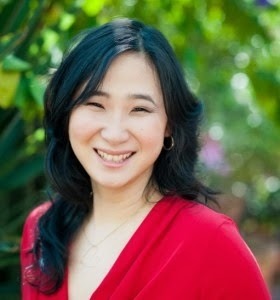
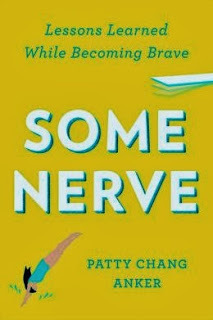
Yes, I am a baby about many things. I'm phobic about driving. Snorkeling makes my blood pressure zoom. And let's not even talk about sky-diving. But when I saw Patty Chang Anker's Some Nerve: Lessons Learned While Becoming Brave (sent to me by her fabulous publicist who knew I'd love it), I immediately started to read, and I was instantly captivated. Why are we afraid? How can we conquer our fears? And why does it feel so good to do so? Patty, I can't thank you enough, and I think a lunch at Le Pain Q in the Village is in order for us!
What is so wonderful about this book is your voice. You're brave, you're also scared. You're hilarious funny, and deeply honest. Was it scary to embark on a book like this? Was there ever a moment where you felt, Oh my God, i can't do this?
Oh my God, I can't do this is my default setting! I have a huge fear of failure. So pretty much every step - every fear I faced, every chapter I wrote - was scary. But when I made myself sit with the fear I realized I can't was actually I don't know how or What if people laugh at me,or This might hurt. My daughter's swim teacher once said to her "If you say I can't then you won't. Let's say I'll try." That really stuck with me. I had to teach myself to say I can figure this out, I don't have to be perfect, this might be uncomfortable/excruciating but it's worth it. I've spent so much of my life feeling alone with my fears I don't want others to feel that way. If we can encourage each other, laugh together, then even though I'm terrified of opening myself up and being judged. it's worth it to connect.
What sparked the writing of this book? I loved that it was your daughter who inspired you to be braver, to take risks. Are there still any risks you won't take?
Three things actually sparked the idea of facing my fears. When I was 39 my daughters were 3 and 8 - at that age where I was constantly pushing them to try new things while I cheered from a bench. How long before they'd learn the word "hypocrite" and apply it to me? Around that time a friend ran her first marathon at age 40 and I realized some of my friends were doing more in midlife than ever while others were doing much less. My comfort zone was shrinking (it was the exact shape of a rut) when Barb, a recent acquaintance, invited me to go to the beach for the morning. It was the most decadent idea, to leave my responsibilities and go to the beach with a virtual stranger -Patty Chang Anker would never do this! And in one of the most impulsive acts of my life up to that point I said yes. I couldn't believe myself - I had a fear of the ocean, I had a fear of strangers, but I said yes. All that sparked my blog, Facing Forty Upside Down, about trying new things in midlife. After 2 years of blogging I realized there were so many stories I wanted to tell in depth, so much information and practical advice from experts I wanted to share, that I wanted to write a book.
There are still risks I'm not ready to take, like skydiving/scuba diving - let's just call that part of my heart-attack prevention program - but I tell myself now that if it's something most of the people I love are able to enjoy or will do because it's important then I at least to have to give it a good try.
How did you decide what fears you were going to tackle and why? What surprised you?
I started small, with fears I could tackle in a short amount of time (falling into a swimming pool takes 3 seconds, I learned to dive off the board within 60 minutes!) or that I could do a little at a time (a year of weekly yoga classes before I could do a steady handstand). I focused on activities that would make daily life more fun or rewarding (no eating bugs or shark cage diving - see heart-attack prevention, above). Most of my challenges were physical because I've always kind of klutzy, and a number of them were in the water because I almost drowned once on a river and it affected my ability to enjoy the ocean. My editor wanted the book to include common fears I didn't have - of heights, driving, public speaking and death, so for those I joined others facing their fears, at Toastmasters, on ropes courses, self-defense classes and driving lessons.
Everything surprised me. I feel like the book showed me, over and over, that I go through life thinking I know how things will turn out, when actually I have no idea. Things I thought I couldn't do, I could (surfing). Things I felt confident about in theory terrified me in reality (high ropes course).Things I thought might hurt me DID hurt me (I broke my foot in the ocean) but then I surprised myself by being strong enough to deal with those repercussions. I used to hate surprises, I hated not knowing - but surprise is the spice of life, it wakes you up, it makes you pay attention. It often makes me laugh, and always makes me feel something real.
I love the quote you give from Rev. Amy Lamborn that "people are as much afraid of living as they are of dying." How can we convince others--and ourselves--to risk--and how can we know when a risk is not worth it, when it would, in fact, be a mistake?
I spoke with people who had near death experiences (by illness, on a plane, being lost at sea, in a car accident) as well as a priest, a rabbi and a swami - and what they all say is that life is precious - not in a "so let's be careful" sense - but in a "let's make the most of it" way. When we live smaller lives we think we're protecting ourselves from death, but what we're really doing is protecting ourselves from the ups and downs and uncertainties of life. But aren't we here to live?
Of course there are risks not worth taking - please don't gamble or play chicken or break laws or hearts willy nilly. But a lot of the time we can't know for a fact what the outcome will be. That's what it means to take a risk - it could in hindsight be a mistake. I now tell myself that if I can live with that possible outcome (and we can stand a lot more than we think, and mistakes are allowed, they help us learn and grow) and if it's worth it to try, then I take the leap. We can't wait to know that it won't be a mistake. Certainty (except that we're all going to end up dead anyway) is rare. Sometimes you have to take that mixture of hope and trepidation and throw your faith toward hope.
I love the idea how taking risks not only changes yourself, but everyone you come in contact with. Can you talk about that, please?
Excitement is contagious! When your eyes light up, when you feel flushed and proud, it's irresistible to others. Your kids, spouse, friends, pharmacist, car guy, you name it - everyone will think you've lost weight, changed your hair, fallen in love. And when you start talking about your victories - and your vulnerabilities - others will open up to you, will find things in common, will start thinking about how they could try something themselves. When I first started writing about facing my fears I had the distinct thought "I don't have to do this. No one will notice if I don't." That's true. If you change, people will notice. You may never know the scope of your impact. From that first blog post when I almost reconsidered there are now so many people facing their fears and doing things they never thought they could do which will almost certainly change the world in some way. Why hold ourselves back from having that kind of impact?
Tell us about the Some Nerve challenge, and do you really think that I, who am totally driving-phobic, could overcome this? Or do you ever think it's better to just let some things go?
The #SomeNerve Challenge is where "I can't" becomes "I'll try." It's simple: Post a message saying "I will face my fear of ____________ by ____________" Pick a fear, pick a method, set a deadline. Let us know so we can cheer you on and hold you accountable. More tips for picking a fear at my PsychologyToday.com blog.
As for driving phobias, this is a tough one because driving is legitimately a dangerous activity. For most people, though, it is possible to learn to drive safely and the ability to get yourself and your loved ones where you want to go, to be the one in control instead of at the mercy of taxi drivers and relatives who may not be good drivers at all, is worth the risk. There are physical and mental requirements for driving - if a person has something like a movement disorder, vision problem, or is unable to understand the rules of the rules of the road, that may preclude him/her from driving. But if the phobia is an emotional response, a teacher or counselor who knows how to work with a student to de-escalate the fear first - can make it possible to learn to drive safely. I saw this in action when Lynn Fuchs, a driving instructor who is also a certified counselor and specializes in helping those with driving phobias, helped a car crash survivor relieve herself of the emotional burden of the accident, settle her own nervous system in the driver's seat, and then to drive.
What's the most important piece of advice you would give people about facing their fears?
"I'm stronger than I think." Say it over and over, like a mantra. Every time you feel afraid, say it, believe it. Because it's true.
What's obsessing you now and why? Or should I ask, "What's your plan for tomorrow?"
I am obsessed with getting this message out to people who need it and finding out how it changes their lives. I get a contact high every time someone tells me how proud they are of facing a fear, I'm addicted to their happiness, to their stories of growth. I always want more!
And I'm obsessed with The Voice. My heart's with Tessanne but Jacquie Lee is a phenom!
Patty
Patty Chang AnkerAuthor, SOME NERVEBlogger, Facing Forty Upside Down, PsychologyToday.comwww.pattychanganker.comTwitter: @PattyChangAnker, Facebook Author PageTEDx Talk: "Warning: Leaving Comfort Zone. Things Could Get Exciting"
Some Nerve: Lessons Learned While Becoming Brave (Riverhead Books) Featured in O Magazine, Marie Claire, USA TodayParents Magazine "Mom Must Read"Available everywhere books are sold, in hardcover, ebook and audiobook.
Published on November 18, 2013 16:37
November 7, 2013
Anne Ursu talks about why she loves the magic stuff, Asperger's, bravery, and cheering for Middle Grade books
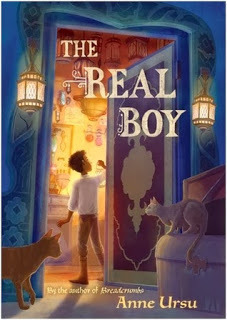
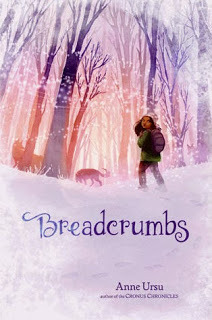
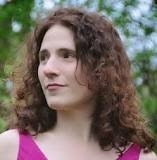
I first met Anne Ursu through Readerville, the online writing community, and like most of her friends, adored her instantly. We email occasionally, I've played her tapes of my son singing when he was two, and I follow her life on Facebook as religiously as I read her amazing books. She began her career writing for adults, with Spilling Clarence, a novel I happily blurbed, following it with The Disapparition of James, and then moved on to writing for kids. And what she writes is stunning. The Cronus Chronicles dipped into Greek mythology. Breadcrumbs, a haunting retelling of The Snow Queen, received starred reviews from Booklist, Publisher's Weekly, School Library Journal and more, and it was a selection for NPR's Backseat Book Club, and well as a Junior Library Guild Selection. Her latest novel, The Real Boy, about how we find our place in the world, is on the long list for the 2013 National Book Award.
I'm so honored to host Anne here!
You’ve had a dazzling career, beginning with your acclaimed adult novels and the moving into your even more acclaimed children’s literature. So how does one get from one point to the other? What made you want to write for children? How is it different? Do you miss writing for adults and will you write for adults again--(though one could say that your books ARE also for adults.)
I had such a profound relationship with books when I was a kid. My mom said I used to disappear into my room on Friday night with a stack of library books and come out Monday morning with them all read. When you're a kid, you absorb books in a way adults just don't, you really absorb them into part of your own being the way you do with important experiences. And so I've carried all those books I absorbed with me, and the thought of kids books always made me really happy. As I was working on my adult books, I became good friends with someone who was writing middle grade fiction. And I thought, "Wow, you can DO that?"
I got a little discouraged with adult fiction and all the rules surrounding it. It seemed like women writers especially were expected to write very straightforward books and if you tried to play around with form or ideas there was something suspect about the work, and then no one really listened. My second book involved a family who took their little boy to a circus and a clown accidentally made him disappear; the book then follows the family. I was trying to write about the absurdity of loss, and it seemed like using that heightened situation was the most resonant way of getting at it. After the book came out, I was at an author festival sitting at a table while people examine your books and smile wanly at you, and this woman came up to me and asked what the book was about. I told her, and her nostril visibly twitched. "Oh," she said, "I don't like that magic stuff."
And I think that was my problem: I loved that magic stuff. To me stories were all about magic of one kind or another. And meanwhile I was reading my writer friend's brilliantly imaginative very smart stuff, and then I picked up Harry Potter, and then it was all over. I fell in love with fantasy for young readers--it was so smart and inventive and playful, and meanwhile these books were engaging with really fundamental ideas about the human experience.
The great thing about middle grade is it's just you and the reader. No one else is paying attention. And these readers are so open-minded and open-hearted; they don't have preconceived ideas of what stories should do or how they should work. So you have that much more freedom.
I was deeply moved by an essay you wrote about how you wrote The Real Boy for your son Dash, who has Asperger’s. You wrote that you wanted him to have a book where a boy like him is the hero, which is really what everyone wants out of the books he or she reads--to find someone to connect with. How difficult was it to write such a book? Did anything about the writing surprise you?
I'd been thinking for a while about trying to write a fantasy that got at the experience of having Asperger's in some way. My son's experience of the world is completely strange to me; I can't comprehend what it is like to be him. Really, I had all these elaborate ideas about making the experience of the fantasy world feel like having Asperger's, but in the end it became writing about this boy who doesn't feel like he's made the same way as everyone else. And while he is a child that would be diagnosed as on the spectrum today, I think everyone can relate to that feeling.
I was very scared about the idea of trying to write an Asperger's character. I didn't want to get it wrong. And there are so many stereotypes out there--I think a lot of popular depictions of autism are more stereotype than character. People with autism can be very empathetic, very sensitive, very imaginative, but you would never know it by the way they are portrayed.
As I was writing, though, all that seemed to matter was Oscar; he was who he was. You can't worry and write; you just have to let your characters be who they are going to be.
What struck me when I read the book was the extraordinary way you don’t talk down to kids, you respect them, and your admiration and support and being-in-the-trenches-with-them feeling comes out on every page. You talk about very adult issues, what does power mean and when does it corrupt? What does it mean to be brave and what is the cost? I also deeply admired the ending, which I won’t give away, how it doesn’t necessarily give the characters what they want, but it does give them what they need, and it’s open-ended in a very adult way. Did you always know this ending?
I tend to fly pretty blind when writing--I start with the characters and a few loose ideas and see what happens. Generally, the story reveals itself--narrative has it's own imperatives--and once I got going it seemed clear what would have to happen: The world had become corrupt, and no one was going to be able to step outside the system and see what needed to happen except for the children. As adults we sometimes have this idea that stories for kids are supposed to end prettily, happily ever after. But I think the real job of middle grade isn't to tell kids that the world is all okay, but that they are okay, that they have the ability and power to change things for the better.
I also was done in by the way you connected the larger world with Oscar’s very intimate story. How did you build those connections?
I love writing fantasy because you get to take someone's internal life and build this entire world around it, taking the internal and manifesting it externally. Oscar thinks he's very safe in his small life, and so of course the book has to pull him out of the cellar and throw him into the big world. I tried to reflect his issues in those of the world at large--so as he struggles with his own imperfection, the adults are striving for perfection, and the events of the book come to question both of these concepts. And everything that Oscar faces has to challenge him specifically, his specific monsters need to come to literal life. And by facing them, that's how he grows and changes so he can be okay.
Let’s talk about craft. How do you write? You’re an incredibly busy single mom and you teach at Hamline, so how do you manage? Do you have rituals? Bounce pages off writing partners? Do you outline or hope the muse is hanging around?
This is a question I’m still trying to figure out; I don’t feel like I’m managing yet. The Real Boy is the only thing I’ve written in the last three years. When I was working on it I learned how to create time to write (mostly at night), but I’ve spent most of the last three years not writing. The real problem for me is accessing that creative space in my brain, the one that takes flickers of thoughts and spins them into a story idea. My brain is so filled with other things--I just don't think my mind has room. I've tried to build in more structure, but it just doesn't work; it's not realistic. I just saw the author Rainbow Rowell speak, and she said, "Your kids' entire job is to keep you from writing." Mine's really good at his job.
What’s obsessing you now and why?
I'm really interested in the way fantastic elements affect a story for the reader, how you can create meaning through the use of magic and the surreal. I'm trying to put together a lecture about it. I think I have two missions in life--to convince people that fantasy is a valid form of literary fiction, and to run around yelling AND ALSO THERE'S MIDDLE GRADE.
What question didn’t I ask that I should have?
I wanted to recommend a few middle grade books for adults if they are interested in exploring the literature further:
When You Reach Me by Rebecca SteadHoles by Louis SacharThe One and Only Ivan by Katherine ApplegateThe Tale of Despereaux by Kate DiCamilloSeven Stories Up by Laurel SnyderThe Hero's Guide to Saving Your Kingdom by Christopher HealyThe Center of Everything by Linda UrbanNightingale's Nest by Nikii Loftin
Iron-Hearted Violet by Kelly Barnhill
Published on November 07, 2013 17:09
Daniel Wallace talks about BIG FISH, my favorite novel, film and Broadway Show
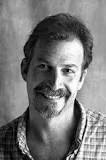
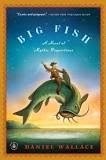
Imagine watching a Broadway show where the stage becomes a drowned city. Where mermaids flip their tails downstage. Where your heart gets smashed and rebuilt. That magic comes from a novel (which was also a magnificent film), Big Fish, by Daniel Wallace, about fathers and sons, dreamers, and the stories we tell ourselves and others. Wallace is also the author of Big Fish, Ray in Reverse, The Watermelon King, O Great Rosenfeld, Off the Map, Mr. Sebastian and the Negro Magician and the Kings and Queens of Roam, and I'm so thrilled to have him here. Thank you so, so much, Daniel!
You've had a variety of odd jobs before you became a writer. Tell us about the transformation.
It actually didn't feel like a transformation to me. I was a writer long before I was a writer. I negotiated my work life -- every part of my life, really -- so I would have more time to write, more opportunities to learn, to read, to surround myself with words. So I worked in bookstores, helped direct the literacy council, drew pictures. I was lucky never to be too far from the world where I wanted to be. It's overlooked sometimes but the truth is I do the same thing now, five novels into a so-called career, that I did then, thirty years ago, five novels away from my first publication: I sit down and write. Nothing's changed.
Big Fish is so moving. About fathers and sons, and really, about the stories we tell and the stories we make of our lives, it resonated with me on so many, many levels. Can you talk about what sparked the writing of this novel? And what was the writing like?
Looking back I think about writing this book, my sixth after five unsuccessful attempts, and like to think it felt different than the other ones did, but I don't know if that's true. I may just be making up a past to go with the future this book brought with it. It may be closer to the truth to say that I'd rather be writing than doing almost anything else, and that I get as much joy from writing badly as I do when I appear to be writing well. I might not be able to tell the difference.
But the book started with the title. I had those two words -- BIG FISH -- scrawled on a piece of notebook paper and taped the wall of the laundry room where I wrote and I would look at them and think how great a title that was for a book. All I needed was a book to go with it! I'd always been drawn to Greek myth, and my father was (and still is I imagine) both a magnetic and repulsive force in my life. It's always good to write toward your passions, and with this book I think, for the first time, this is what I did. My father was alive and well when I wrote it, though. I don't think I could have written a novel about a dying father if he actually had been dying. The writing came quick; it's a pretty short book.
I always ask about the craft, because I'm obsessed by it. Big Fish has this perfect structure, where things pay off in the most astonishing ways. When you were writing the novel, did you always know where it was going, how it would end up? Or was that a surprise?
I never know the end of a story, or sometimes even its middle, when I start, and especially with this one I had no idea. I didn't even know it was going to be a novel. I was taking care of my infant son and didn't have as much time to write so the structure was dictated by his reality: I was writing a couple of hundred words a day, tales mythologizing this contemporary man, but I didn't think there was a novel in it until one appeared through the simple accumulation of pages. I didn't know how it was going to end until I was almost at the end, and I was so happily surprised that I was writing a book where such a thing could happen and actually make sense. But I had to go back and rewrite it of course so that it would make sense to somebody other than me.
You have said, "I was capable of writing and sometimes that feels like magic," which is accurate and wonderful. Can you talk about that please?
I tried to do something other than write, to work a real job, because I really do think -- without being overly-dramatic -- that if you can not be a writer than you should not be a writer. It's not remunerative, hard work that often ends in ashes. But it gave me something I didn't get anywhere else, and that's still the case. Just hearing what words sound like when they rub together as I write them -- that's such a simple pure joy to me. I am so easily entertained by that. And that's just the beginning.
It's rare for an author to have both a film and a Broadway show of his or her work. Did you have any input in either? Was it a strange experience to see your work in another medium?
It's always strange to see one thing become another, completely different thing: the question is whether it's good strange or bad strange, and my experience with the transmogrification has been good. I'm lucky in that my story was adopted and adapted by seriously talented people. I love what they did with the story, movie and musical. I played a very minor part in both.
What's obsessing you now and why?
The haiku I'm writing, adapted from my novel Big Fish:
He hides behind liesand charm. I do not know him.My father's a fish.
Not really.
I'm working on a novel. I've also written a script we're casting now. I love it. It's based on this short film. http://vimeo.com/40915654
-- DHW
www.danielwallace.org/roam/
Published on November 07, 2013 16:53
November 4, 2013
Leslie Jamison talks about THE GIN CLOSET, whether people can really be saved, writing, and so much more
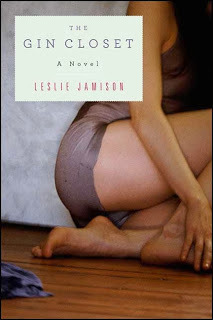
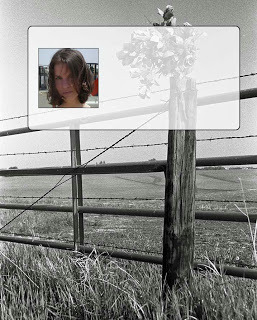
My old publicist and friend Michael Taeckens (now the marketing director at Gray Wolf) told me I would love this book, and when Michael talks, I always listen. And he was right. I was so enthralled by this novel, I wanted to reread it as soon as I finished. Set in the late 60s, it's about Tilly Rudolf, who is drinking herself to death in a trailer park. But then her niece Stella shows up and both their lives begin to be impacted. It's raw, graceful, and totally unforgettable, and I can't be more honored to host Leslie Jamison.
What sparked this novel?
The biographical answer to that question is where I usually go, when asked, so I’ll start with the short version of that: I was living with my grandmother, who was dying, and during those days I started writing about what it felt like to be confronting her failing health, and the possibility of her death; and thinking about that overwhelming difficulty and loss in relation to her long estrangement from one of her daughters—my aunt, a woman I had never met. In that sense, the book was something of a What if? that sprang from real life; I imagined a reconnection that hasn’t—yet—happened in life.
But the more conceptual answer—the one I articulate less frequently, because it lends itself less readily to articulation—has to do with the question of pain. I was interested in representing pain that doesn’t necessarily have a discrete source. As a culture, we’re attached to pain that comes from some conspicuous catalyst—old childhood wounds, traumas, misfortune. But sometimes the roots of pain are harder to trace—or harder to label precisely—and I think this is especially true for women, who often feel a sense of innate lack or wanting, an urge to harm themselves or do everything in their power to redress a sense of inadequacy they’ve almost absorbed osmosis-style from the world around them. This nebulous, sourceless, inexplicable pain is harder to talk about—and it often invites a kind of scorn or impatience. I wanted to illuminate its contours; how it might manifest. It’s also uncomfortable to talk about because it attaches to gender in tricky ways; it feels like there is something “female” about it, or can be, but that essentializing also feels perilous. I’m interested in dissecting archetypes of wounded women rather than simply re-hashing or perpetuating them.
The novel is narrated by both Stella, a young woman, and Tilly, the mysterious aunt Stella connects with, which is a deeply satisfying structure. What made you decide on this structure rather than filtering it all through the eyes of just Stella?
That’s a fantastic question; and somehow intuits the genesis of the book without my having explained it. The novel started out told entirely from Stella’s perspective—in fact, the first few drafts were just her version of the story. But I was feeling increasingly unsatisfied with Tilly’s role in the story (her name was Maddy in those early drafts) for several reasons—she felt too flat to me, as if she were entirely defined by her dysfunction, her pain, her role as a catalyst for the salvation strategies of other people. I wanted to make her fuller; to give her a self that held something beyond self-destruction and wounds. I also wanted to tell parts of her story that Stella might not have access to—more of her early life, and her experience of giving birth; in part because these portions of her history would help to bring out those parts of her (her nurturing impulse, her care for others) that weren’t necessarily illuminated by her adult life.
I toyed around with a number of structural possibilities—perhaps Stella could find letters or diary entries that narrated these experiences?—but none of these possibilities felt right. Tilly wasn’t someone naturally prone to writing everything it down; it didn’t feel right that she would have committed everything to text.
It was actually at a hotel in Detroit—I remember I was stuck there on a layover, on one of the coldest nights of the year, and I wasn’t particularly happy to be stranded—that I realized I wanted to narrate some of the book from Tilly’s perspective. This felt simultaneously daunting and liberating: I realized I could do this (no one was stopping me) and that I felt urgently compelled to do so—which meant the book I thought was done was really only halfway done. Moral? The god-function of the author is also a burden!
But it was incredible: reimagining the structure of the book, and giving Tilly her own voice, really forced me to dig deeper into her character, to sculpt her identity more fully.
So much of the book is about Stella’s attempt to save Tilly. Do you think people can ever be saved?
Wow. Big question. Hard question. Great question. I do think people can be saved, but I think that saving is never permanent or final, and “saving” never works as a fully transitive verb. Which is to say: saving is always a process—always fragile, tenuous, a structure we daily construct rather than a destination we reach—and it’s not something one person can “do” to another; it must also involve coaxing or reawakening some self-saving impulse in the one being saved.
I’d also say—for the record—that my take on whether saving is possible, or how it might work, is pretty different now than when I wrote the book. Which is interesting for me to think about. I haven’t read the novel since before it was published—probably not for four years or so—and I’d be curious to feel my own reactions if I reread it. It might be a few more years before I’m ready to do that.
What surprised you in the writing of the book?
Well, certainly the fact that it ended up including Tilly’s perspective as well as Stella’s. As I mentioned above, that was a third-draft revelation. What else? How much I liked Abe—how I gave him so many traits I admired, even while I put him through quite a bit of pain (though I suppose you could say that about all the characters…) I was also surprised by how much I enjoyed the Rashomon effect of narrating the same scene—or at least, recounting it—from two different perspectives. That’s something I’d love to experiment with even more.
There are so many wonderful moments in the book--Stella remembering a typing course, for example--that I’d love to talk about craft. How did you write this novel? Are you an outliner at all, or do you wade into the darkness and hope the story will reveal itself?
Entirely the latter, and that’s a perfect way of describing it—wading into the darkness and hoping the story would reveal itself. I was following emotion and intuition and my own life unfolding. I have been trying to write a second novel—very different in subject and scope, about the Sandinista Revolution in Nicaragua—that involved an outline (an outline pasted on my wall, actually) but found that sapped some electricity from the process, for me. I’m still trying to figure that out.
What is it about the typing scene—or other moments—that makes you want to ask about craft? That piqued my curiosity. One of my big struggles with this book was figuring out how many of my flashback scenes actually belonged in the final manuscript—for both women—and which ones I needed to write mainly to get to know them better.
What’s obsessing you now and why?
A lot of things! One of them is this whale named 52 Hertz—who has been dubbed “the loneliest whale in the world,” because his courtship song is at a higher frequency than other whales, and he’s always tracked alone. I’m less fascinated by him and more fascinated by how many other people are fascinated by him—artists, writers, ordinary lovelorn folks, singers writing songs to sing back. Of course, I’m writing about it.
What question didn’t I ask that I should have?
It’s not like I missed this question—because I get it often enough, from lots of readers—but it’s one I’m still asking myself: Why incest? It’s not something you see that frequently; and it’s pretty striking—and kind of obscene, seems deliberately shocking—and what is it doing? What is that shock doing?
I’ve caught myself feeling a bit sheepish about the incest, to be honest, because I’m not sure I have a water-tight account of why it needs to be there—only that it seemed like what happened to these characters when they closer to each other in these confusing and uncomfortable ways. Which is to say: in truth, I’m a bit confused by my own choices. I don’t doubt them—they feel true to the book, spoken in that maddeningly spiritual/intuitive sense that authors sometimes speak about these things—but I can’t entirely provide a conceptual account of them.
If my literary-critic-self (I’m also a grad student in English) were to swoop down and start dissecting my author-self, I might say something like this: the novel is interested in non-traditional forms of intimacy, relationships that defy traditional categories of intimacy; and this was one of those—the most extreme example of that, a kind of closeness that hadn’t been given any recognizable space to inhabit; that would never be given any kind of permission or permitted category. Incest also permits a certain kind of emotional concision in the book, by forcing the characters into a more claustrophobic triangle. All three of them have profound investments in each other; it makes a web.
Published on November 04, 2013 09:52
November 2, 2013
Tamar Ossowski talks about the creative process, having a child with autism, and her luminous new novel LEFT
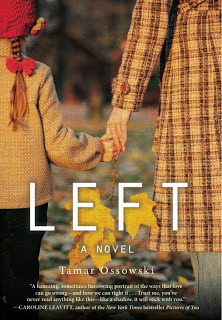
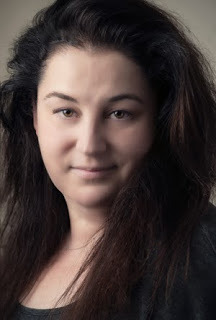
Sometimes you get lucky and get to see a novel in the early stages. I read early versions of LEFT and was knocked out. The story of two young girls, one of them autistic, and a mother on the run, it's very much a book about the stories we tell ourselves and others in order to make sense of our lives. Thank you so, so much, Tamar for coming on the blog.
I have a child who is on the autism spectrum. Things can be confusing for him and he is someone who needs maps to navigate his world. Or more accurately, he needs maps to navigate OUR world. When he speaks he needs to remember to look people in the eye. He needs to remember that most people are not interested in hearing about the history of pinball machines or seeing his collection of used VHS tapes. He has had to learn that even if someone is not speaking to him they may still be communicating. He thinks differently than me. He experiences the world differently than me. But in the end, we are not that different.At the age of three my son was non-verbal and communicated by pointing. As he struggled to make himself understood, I struggled too. I signed up for an online writing class because I needed to find a place to share my voice, a place where I could be heard. On the very first day, the instructor told us to put 10 meaningful words into a hat, pull out five and begin to write. And that was the beginning of my novel, LEFT. It took almost eight years to complete. Even though the process was organic and authentic it was also filled with anxiety. Most of the time I felt like I was blindfolded and trapped in a dark locked room with nothing but instinct to guide me. My child and I had more in common than I thought.I had incredible support from teachers and writers (thank you Caroline!) to keep going and what finally emerged were passages of writing that seemed both glorious and magical and honest. I wrote and rewrote and struggled but most of all I tried to have hope. It was also around this time my child began to speak and when he was almost five we learned that he was reading at the level of a twelve year old. My son is a teenager now. He uses graphic organizers to help him compose essays and break down math problems. He is more comfortable and competent with technology than I am. He has finally figured out that I am not being literal when I say something with sarcasm (which I do often). He has learned to express his needs and adapt to this world and I am proud of his courage and of all that he has accomplished. I have tried to adapt as well. I no longer write without an outline because like him, I need structure in order to gain understanding. I need a tool to help me make sense of all that is going on around me. I need these things to help me find my way through the dark.For many reasons I am lucky to be his mother. He has taught me to be patient, to be less judgmental and a little more forgiving. Mostly though, by watching him learn to find his map, I have also learned to find mine.
Tamar Ossowski is married and has three children, one of whom was born with special needs and could spell before he learned to speak. She wrote the novel Left to explore the possibility that you can only become the person you are supposed to be once you truly embrace the person you already are.
Ossowski resides in Needham, Massachusetts. You can follow her on her own web page, as well as Facebook or Twitter:
www.tamarossowski.comwww.facebook.com/tamarossowskiauthor@TamarOssowski
Published on November 02, 2013 09:59
Paula Marie Coomer, author of the memoir BluE MOON VEGETARIAN writes about how a vacuum cleaner changed her life
I'm a vegetarian so of course I was interested in Paula Marie Coomer's memoir Blue Moon Vegetarian. It's such a fantastic book that I asked her to write something for the blog. Thank you, Paula!

Silent Beautiful
The shift in my life came in the form of a Hoover vacuum cleaner. Sixty bucks, fully refurbished, thirty-day guarantee. An exact replica of the one Phil and I owned, the one he bought when he was single, which I'd brought in to be serviced, and which wasn't worth saving.
So I traded, took home the new one. Plugged it in.
No burning rubber smell. No gears grinding. As Emerson might say: silent beautiful. Meaning unexpected. Meaning a gift from the Great Whatever. Like having your mug of beer turned quick!flash! into a flute of butter-silk champagne.
You know the kind.
The minute I saw that new-red version of our old machine, I sighed. A sign. An omen. I'm getting older now. I don't want to depend on signs and omens too much. I prefer to take things as they come.
Still, I couldn't shake the metaphor: the Hoover changed but not too much, a better, lovelier version of what we had before. And so it was last week: a few very old bills paid off, finally making strides in the now five-year-old renovation of our beloved two-story Victorian, meaning we finally agreed to pay someone to finish the job for us.
And, I sheepishly had to admit to myself, our marriage—three years in—finally becoming comfortable with itself after a world of challenges: imagine Andi Griffith marrying Madonna. That's just about how hard it's been to settle into all the nooks and crannies of ourselves and in a house that has just as many. We've both known it all along. It's not just our house but us we've been trying to restore. When we met, we were both pretty broken. Not two wholes but a conglomeration of parts.
The book I wrote about the year of our wedding, Blue Moon Vegetarian, explores those nooks and crannies. It also chronicles our journey from omnivore to vegan and the way we healed ourselves by changing the kind of food we ate and by creating recipes. Somewhere in the middle there's a crazy shelter dog named Tesla we tried to adopt, who we also thought was a metaphor for our joining, because he was a highly-pedigreed mixed-breed, and so by gosh were we. Of course you know that metaphor was nothing more than camouflage for a big, emotional conflagration that appears just often enough in our story to make you fear the entire blamed house is going to burn down.
Which, not to worry you, it never quite does.
Paula Marie Coomer is the author most recently of the poetry collection Nurses Who Love English and the novel Dove Creek, which was featured at the Pacific Northwest Booksellers Association 2011 Fall Tradeshow. Her new memoir Blue Moon Vegetarian will be released Nov. 20 from Booktrope.
Published on November 02, 2013 09:55
October 29, 2013
The First True Lie, Cartwheel, The Firecracker King, Cash: What I'm Reading
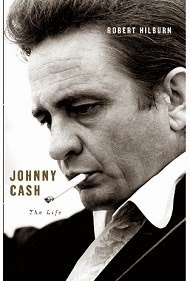
CASH by Robert HilburnWhat I love about this dark, gritty book is how it’s a picture of a whole career. People think of Cash as this icon, but his career had tremendous up and downs, and even someone like Cash struggled with failure. Just a towering book.
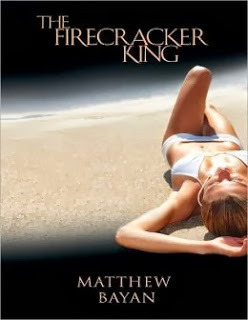
FIRECRACKER by Mark Bayan
Richly atmospheric and haunting, this coming of age tale, set against a 1965 backdrop, investigates the murder of a beautiful teenage girl. Fun fact: Bayan is the genius I relied on for all-things-gun research for my novel-in-progress.
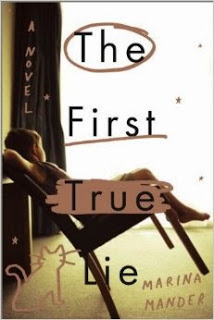
THE FIRST TRUE LIE by Marina Mander
A young boy navigates life after his mother dies in his house, a fact he keeps secret. Unsettling, spare, and unforgettable.
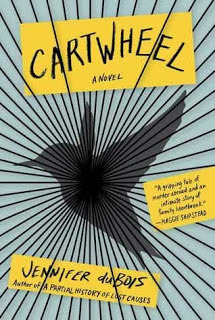
CARTWHEEL by Jennifer DuBoisWho wasn’t fascinated by the Amanda Knox case? DuBois imagines the story as fiction in a novel that is all about how we believe what we believe--and why.
Published on October 29, 2013 09:25

